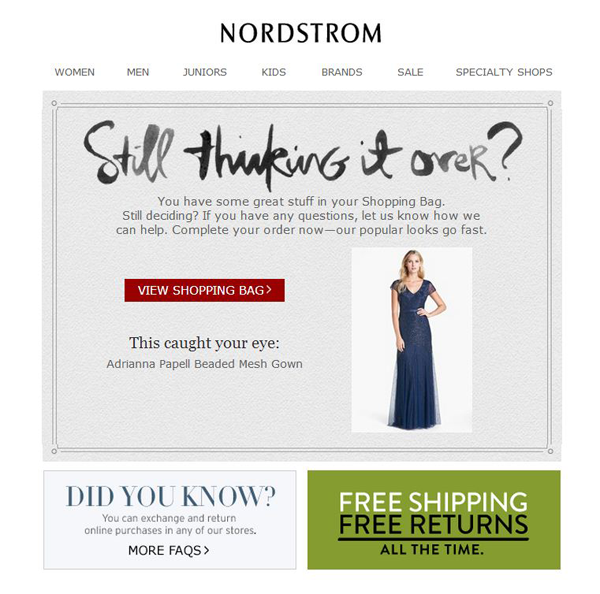Quick Guide to Better Holiday Emails

Last year, online retailers sent an average of 210 promotional emails during the holiday season, which is a 19 percent increase in email volume from the previous year. With eMarketer predicting a 15.1 percent increase in holiday sales, there's no better time to optimize your brand's email strategy.
Your quick guide to better holiday emails includes five tips that are sure to help your brand end 2013 with better email engagement rates (and hopefully conversions).
1. Avoid Peak Times
GetResponse recently analyzed more than 300 million email messages to determine the top times for open and click through rates. Some of the questions they wanted to answer were: What are the most useful email benchmarks; when is the best time for maximum customer engagement; what is an average lifespan of an email message?
Some of the most interesting findings were: Tuesday is the most popular day for sending emails; Tuesday emailings also have the highest open rate and click-through rate; most email opens occur during the first hour after delivery, and after 24 hours, an email's chance of being opened drops below 1 percent. Additionally, welcome messages and confirmation emails can reach a 67 percent open rate and 33 percent click-through rate. (See infographic here)
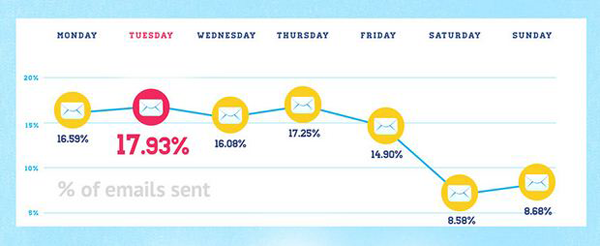
One conclusion that merchants should take from the data is that they should avoid sending during peak times, because email inboxes are more crowded. For example, Cyber Monday 2012 had the highest number of emails sent in pre-Christmas season, according to GetResponse, but the results were below the 2012 average: open rates 18.16 percent and CTR 3.94 percent (2012 benchmarks: 18.58 percent open rate and 4.51 percent CTR). This is probably due to the large volume of emails that were landing in consumers' mailboxes on the same day. Instead, consider being a little unconventional and sending in off-peak times - like Target:
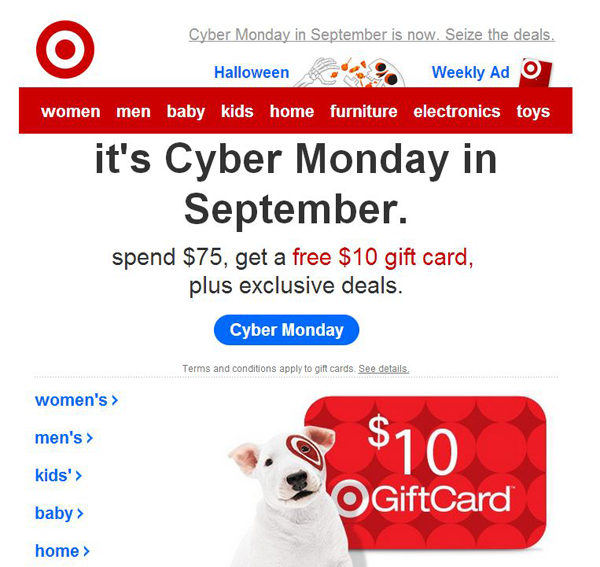
2. Be Responsibly Responsive
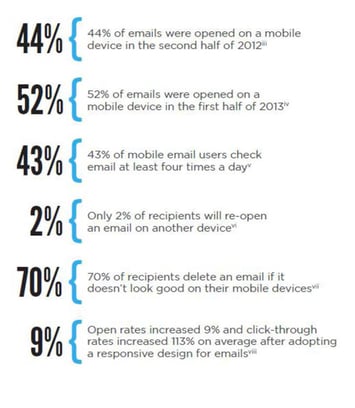 Listrak published a Responsive Design white paper last summer that showed mobile commerce's impact on email (see statistics from the report on the right) and also offered best practices for responsive design, which the ESP describes says takes the guesswork out of screen size - automatically adjusting to the correct screen size when opened, ensuring correct renderability and usability.
Listrak published a Responsive Design white paper last summer that showed mobile commerce's impact on email (see statistics from the report on the right) and also offered best practices for responsive design, which the ESP describes says takes the guesswork out of screen size - automatically adjusting to the correct screen size when opened, ensuring correct renderability and usability.
Among the best practices were to make it easy for your customers by optimizing messages for usability, like including click-to-call or auto-applying discount codes. So, it's not just enough to be responsive, but you also have to ensure a message will transform for each device.
Here's an example of an email that utilizes several best practices of responsive design, including: simple navigation, prominent calls-to-action, some white space, etc.
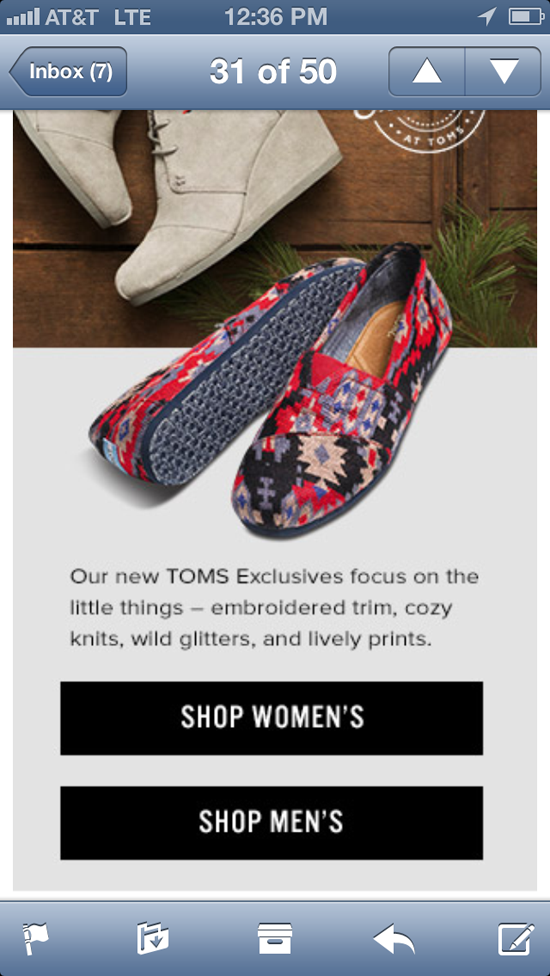
3. Be Local
Mobile will clearly be a driver in holiday sales this year, but many SMBs cannot afford to have branded apps that trigger location-based notifications when a shopper is in or near their store. PunchTab CMO Angela Sanfilippo told Website Magazine in an interview today on a similar topic that the reality is that there are even simple campaigns SMBs can do to engage their audiences and that the mobile Web presents a terrific opportunity for those who can't afford to build a mobile app. She suggests SMBs entice consumers to check in to drive engagement and close the purchase loop.
In the email below, notice Payless includes a Foursquare thumbnail image as one of its social icons. Once users check in to a Payless store, the brand has the option of promoting offers to them. Any merchant with a brick-and-mortar location can leverage this simple tactic.
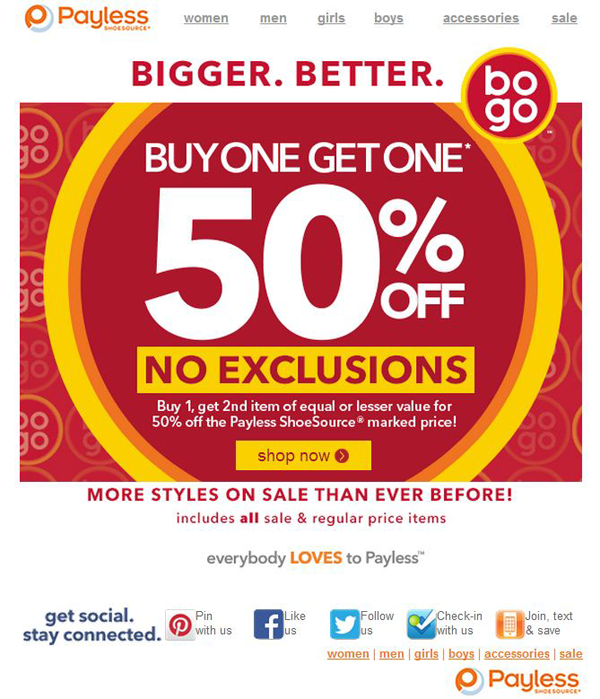
4. Give Them Ideas
To some, gift giving is a fun and creative process, but to others, it can be a frustrating chore. Merchants can help both camps by giving them creative ideas of how to buy for family, friends, coworkers, neighbors, etc. Take the email from Loft below as an example. Instead of "30 days of pants", almost any retailer could do, "30 gifts under $30" instead. This email could include pictures and links to gift suggestions under the $30 price point. Another idea is "15 People - 15 Gifts" which could include 15 gift ideas for 15 different types of people who are in their lives (e.g. a child's teacher, a boss, a secret Santa, etc.). The idea can also help people simplify their lives around the holiday. For example, a spice shop owner could do "30 Days of Easy Recipes" and include recipes that use the spice blends found in his or her store.
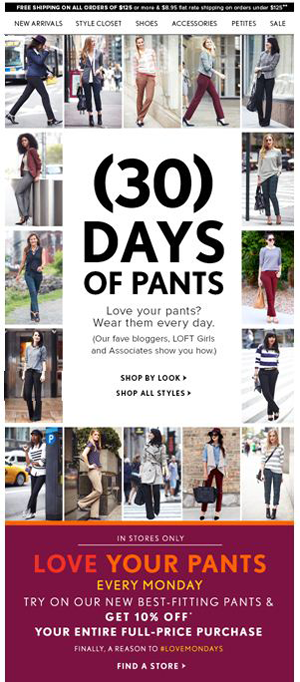
Even better, Bronto Software recommends including "holiday centric navigation" in emails to provide additional shopping opportunities for subscribers by pointing them to a gifts section. Another way to give shoppers shopping inspiration is by having them follow a "pin-happy" brand on Pinterest - like Nordstrom does in the email below.
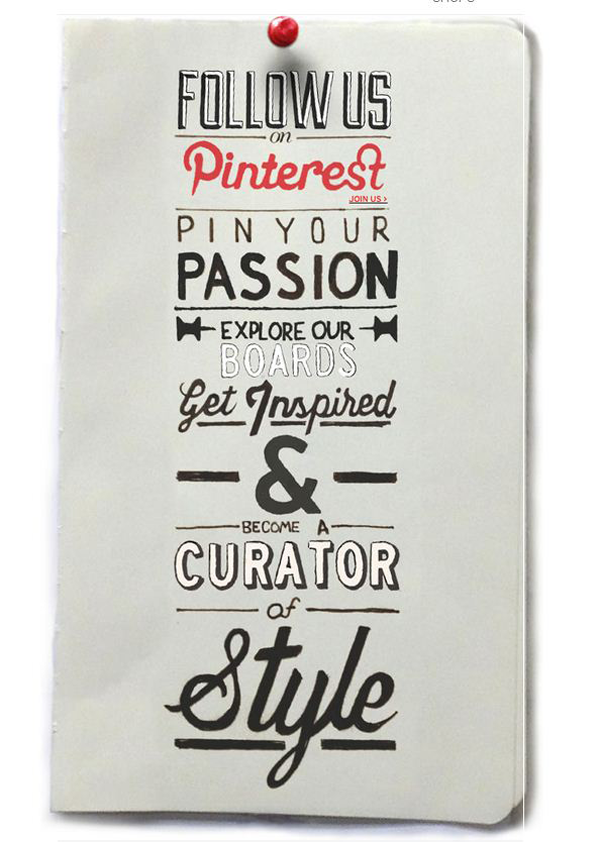
5. Let Em' Know you're There
From welcome emails and shopping cart abandonment reminders to confirmation emails and shipping updates, merchants should increase shopper confidence by letting consumers know they are there with them, every step of the digital process.
In fact, last week, Listrak released a report that showed 24.5 percent of the top 1000 retailers send at least one remarketing campaign after the cart is abandoned, an increase of 29 percent over 2012.
Other key findings were that retailers are reaching back sooner - 73 percent of first messages were received within 24 hours of the abandonment and 79 percent of the second messages were received within 48 hours of the first message. Here's an example from Nordstrom:
